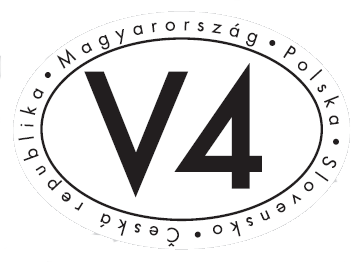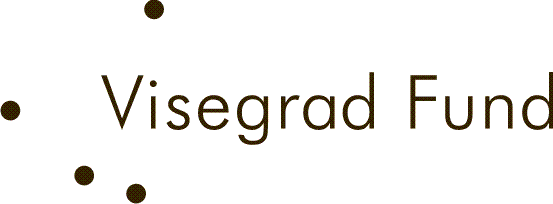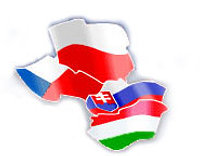Project Publications
| Book 1 | Book 2 | Book 3 | Book 4 | Book 5 | Book 6 | conference articles in journals |
Stanek, P. (2014). Collective Decision-Making in Monetary Policy – A Survey (chapter 4) In: D. Kiendl-Wendner & K. Wach K. (Eds.), International Competitiveness in Visegrad Countries: Macrto and Micro Perspective. Graz: Fachhochschule Joanneym (ISBN: 978-3-200-03673-4).
Full text: pdf (free download)
Abstract
The article aims at surveying the economic literature related to collective decision making in monetary policy. In order to do so it proposes a coherent framework allowing for a structured analysis of the factors influencing the works of a monetary policy committee. These factors are divided into external (shaped outside of the committee e.g. by law) and internal ones (related to the composition of the committee and interactions between its members). The survey proves that the problems analysed in literature indeed fit the proposed framework. Moreover, it points out some of the problems which are underexplored in the existing literature and thus provides interesting suggestions for further research, both theoretical and empirical, related to the functioning of monetary policy committees.
Keywords: collective decision making, monetary policy committee, committee size, decision rule, communication and learning
JEL classification: JEL: E58, D71, D83
References
Alesina, A., Summers, L.H., (1993). Central bank independence and macroeconomic performance: Some comparative evidence. Journal of Money, Credit, and Banking, 25(2), pp. 151-162.
Al-Nowaihi, A., Stracca, L., (2003). Behavioural Central Bank Loss Functions, Skewed Risks and Cerntainty Equivalence. The Manchester School, Supplement, pp. 21-38.
Backus, D., Drifill, J., (1985). Inflation and reputation, American Economic Review, 75(3), pp. 530-538.
Barro, R., Gordon, D., (1983). Rules, discretion and reputation in a model of monetary policy. Journal of Monetary Economics, 12(1), pp. 101-121.
Barro, R., Gordon, D., (1983). A positive theory of monetary policy in a natural rate model. Journal of Political Economy, 91(4), pp. 589-610.
Belden, S., (1989). Policy Preferences of FOMC Members as Revealed by Dissenting Votes. Journal of Money, Credit and Banking, 14(1), pp. 98-118.
Ben-Yashar, R.C., Nitzan, S.I., (1997). The optimal decision rule for fixed-size committees in dichotomous choice situations: the general result. International Economic Review, 38(1), pp. 175-186.
Berger, H., (2002). The ECB and Euro-Area Enlargement. IMF Working Paper no. 02/175.
Berger, H., de Haan, J., Eijfinger, S.C.W., (2001). Central Bank Independence: an update of theory and evidence. Journal of Economic Surveys, 15(1).
Berger, H., Nitsch, V., Lybek, T. (2008). Central bank boards around the world: Why does membership size differ?. European Journal of Political Economy, 24(4), pp. 817-832.
Berk, J.M., Bierut, B., (2003). Committee structure and its implications for monetary policy decision-making. De Nederlandsche Bank, MEB Series 2003-5.
Berk, J.M., Bierut, B., (2004). The effects of learning in interactive monetary policy committees. Tinbergen Institute Discussion Paper TI 2004-029/2.
Berk, J.M., Bierut, B., (2005). On the optimality of decisions made by hub-and-spokes monetary policy committees. DNB Working Paper no. 27.
Berk, J.M., Bierut, B., (2009). Communication in a monetary policy committee: a note. DNB Working Papers 226.
Berk, J.M., Bierut, B., (2011). Monetary Policy Committees: Meetings and Outcomes. Contemporary Economic Policy, 28(4), p. 569–588.
Bhattacharjee, A., Holly, S., (2010). Rational Partisan Theory, Uncertainty, and Spatial Voting: Evidence for the Bank of England’s MPC. Economics & Politics, 22(2), pp. 151-179.
Blinder, A.S., (2004). The Quiet Revolution. Central Banking Goes Modern. New Haven: Yale University Press.
Blinder, A.S., Morgan, J., (2005). Are two heads better than one?: Monetary policy by committee. Journal of Money, Credit and Banking, 37(5), pp. 798-811.
Chang, K.H., (2003). Appointing Central Bankers. The Politics of Monetary Policy in the United States and the European Monetary Union, Cambridge: Cambridge University Press.
Chant, J., (2003). The Bank of Canada: Moving Towards Transparency. Bank of Canada Review, Spring, p. 5-13.
Chappell, H.W. Jr., McGregor, R.R., (2000). A long history of FOMC voting behaviour. Southern Economic Journal, 66(4), pp. 906-922.
Chappell, H.W., Havrilesky, T.M., McGregor, R.R., (1995). Policymakers, Institutions and Central Bank Decisions. Journal of Economics and Business, 47, pp. 113-136.
Chappell, H.W., McGregor, R.R., Vermilyea, T., (2004). Majority Rule, Consensus Building and the Power of the Chairman: Arthur Burns and the Federal Open Market Committee. Journal of Money, Credit and Banking, 36, pp. 407-422.
Chappell, H.W., McGregor, R.R., Vermilyea, T., (2005). Committee Decisions on Monetary Policy. Evidence from Historical Records of the Federal Open Market Committee. Cambridge: Massachusetts Institute of Technology Press.
Chappell, H.W., Havrilesky, T.M., McGregor, R.R., (1993). Partisan Monetary Policies: Presidential Influence Through the Power of Appointment. Quarterly Journal of Economics, 108, pp. 185-218.
Chopin, M.C., Cole, C.S., Ellis, M.A., (1996). Congressional influence on U.S. monetary policy: A reconsideration of the evidence. Journal of Monetary Economics, 38, pp. 561-570.
Chopin, M.C., Cole, C.S., Ellis, M.A., (1996). Congressional policy preferences and U.S. monetary policy. Journal of Monetary Economics, 38, pp. 581-585.
Cobham, D., (2003). Why does the Monetary Policy Committee smooth interest rates?. Oxford Economic Papers, 55(3), pp. 467-493.
de Condorcet, M., (1785). Essai sur l'application de l'analyse à la probabilité des decisions rendues à la pluralité des voix. Paris: L'imprimerie royale.
Cothren, R., (1988). Equilibrium inflation as determined by a policy committee. Quarterly Journal of Economics, 103(2), pp. 429 - 434.
Cukierman, A., (1992). Central Bank Strategy, Credibility and Independence. Cambridge: Massachusetts Institute of Technology Press.
Cukierman, A., Neyapti, B., Webb, S.B., (1992). Measuring the Independence of Central Banks and Its Effects on Policy Outcomes. The World Bank Economic Review, 6(3), pp. 353-398.
Eijffinger, S.C.W., Geraats, P.M., (2006). How Transparent Are Central Banks?. European Journal of Political Economy, 22, pp. 1–21.
Farvaque E., Hammadou, H., Stanek, P., (2009). Select your Committee: The Impact of Central Bankers' Background on Inflation. Économie Internationale / International Economics, 117(1), pp. 99-129.
Farvaque, E., Hammadou, H., Stanek, P. (2011). Selecting Your Inflation Targeters: Background and Performance of Monetary Policy Committee Members. German Economic Review, 12(2), pp. 223-238.
Farvaque, E., Stanek, P., Vigeant, S., (2014). On the performance of monetary policy committees. Kyklos, 67(2), pp. 177–203.
Gerlach-Kristen, P., (2004). Is the MPC's voting record informative about future UK monetary policy?. Scandinavian Journal of Economics, 106(2), pp. 299-314.
Gerlach-Kristen, P., (2005). Too little, too late: Interest rate setting and the costs of consensus. Economics Letters, 88, pp. 376–381.
Gerling, K., Grüner, H.P., Kiel, A., Schulte, E., (2005). Information Acquisition and Decision Making in Committees: a survey. European Journal of Political Economy, 21(3), pp. 563-597.
Göhlman, S., Vaubel, R., (2007). The educational and occupational background of central bankers and its effect on inflation: An empirical analysis. European Economic Review, 54(4), pp. 925-941.
Grier, K.B., (1991). Congressional influence on U.S. monetary policy: An empirical test. Journal of Monetary Economics, 28, pp. 201-220.
Grier, K. B., (1996). Congressional oversight committee influence on U.S. monetary policy revisited, Journal of Monetary Economics, 38, pp. 571-579.
Havrilesky, T., (1991). The Federal Reserve Chairman as Hero: Our Defense against Monetary Excesses?. Cato Journal, 11(1), pp. 65-72.
Havrilesky, T., (1995). The Pressures on Monetary Policy, 2nd ed., New York: Kluwer.
Havrilesky, T., Gildea, J., (1991). The Policy Preferences of FOMC Members as Revealed by Dissenting Votes. Journal of Money, Credit and Banking, 23(1), pp. 130-138.
Havrilesky, T., Schweitzer, R., (1990). A Theory of FOMC Dissent Voting with Evidence from the Time Series. In: Mayer, T., (ed.), The Political Economy of American Monetary Policy, Cambridge: Cambridge University Press.
Kydland, F., Prescott, E., (1977). Rules rather than discretion: the inconsistency of optimal plans. Journal of Political Economy, 85(3), pp. 473-491.
Lombardelli, C., Proudman, J., Talbot, J., (2006). Committees Versus Individuals: An Experimental Analysis of Monetary Policy Decision Making. International Journal of Central Banking, 1(1), pp. 181-205.
Maier, P., Bezoen, S., (2004). Bashing and supporting central banks: the Bundesbank and the European Central Bank. European Journal of Political Economy, 20, pp. 923-939.
Nitzan, S., Paroush, J., (1985). Collective Decision Making. An Economic Outlook. Cambridge: Cambridge University Press.
Ottaviani, M., Sørensen, P., (2001). Information aggregation in debate: who should speak first?. Journal of Public Economics, 81, pp. 393-421.
Persson, T., Tabellini, G., (1993). Designing Institutions for Monetary Stability. Carnegie-Rochester Conference Series on Public Policy, 39, pp. 53-84.
Rizzi, L., Bazzana, F., Kasabov, N., Fedrizzi, M., Erzegovesi, L., (2003). Simulation of ECB decisions and forecast of short term Euro rate with an adaptive fuzzy expert system. European Journal of Operational Research, 143, pp. 363-381.
Rogoff, K., (1985). The optimal degree of commitment to an intermediate monetary target, Quarterly Journal of Economics. C(4), pp. 1169-1190.
Sibert, A., (2003). Monetary Policy Committees: Individual and Collective Reputations. Review of Economic Studies, 70(3), pp. 649-665.
Stanek, P., (2004). How to assess the enlargement reform of the European Central Bank, Revue de l’Observatoire Français des Conjonctures Economiques. Special Issue: “The new European Union Enlargement”, ed. Jérôme Creel & Sandrine Levasseur, Paris, April, pp. 209-239.
Stanek, P., (2013). Theoretical aspects of collective decision making - survey of economic literature. Comparative Economic Research, 16(1), pp. 103-122.
Thies, C. G., (2004). Individuals, institutions, and inflation: conceptual complexity, central bank independence, and the Asian Crisis. International Studies Quarterly, 48(3), pp. 579-602.
Waller, C.J., (1992). A Bargaining Model of Partisan Appointments to the Central Bank. Journal of Monetary Economics, XXIX, pp. 411-28.
Waller, C., (2000). Policy Boards and Policy Smoothing. Quarterly Journal of Economics, 115(1), pp. 305-339.
Walsh, C.E., (1995). Optimal Contracts for Central Bankers. American Economic Review, 85(1), pp. 150-67.
Walsh, C.E., (1995). Is New Zealand's Reserve Bank Act of 1989 an Optimal Central Bank Contract?. Journal of Money, Credit and Banking, 27(4).
Czech Republic
Hungary
Poland
Slovakia

Contact:
Dr hab. Krzysztof Wach
Cracow University of Economics
wachk@uek.krakow.pl
www.wach.uek.krakow.pl

